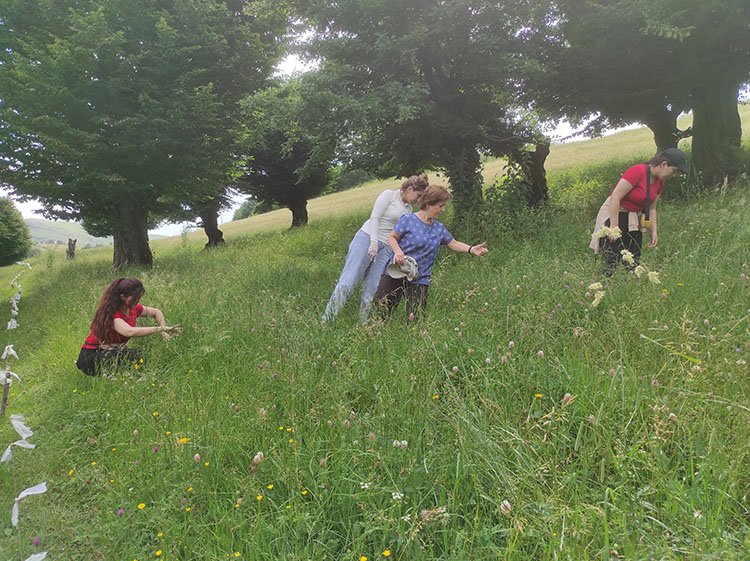
Employees of the Department of Mycology and primitive plants of the Institute of Botany of the Ministry of Science and Education of the Republic of Azerbaijan, Dr. Dilzara Aghayeva, scientific worker Tamilla Mayilova, junior scientific staff Khadija Apbayeva, Elnara Isgandarli and Yagut Yusifova were on an expedition in Dashkasan region and Goygol National Park during the spring and summer season.
The purpose of the expedition was to study the diversity of fungi, to determine the pathogens and their distribution area, to study food and medically important macromycetes. The monitoring was carried out in different cenoses around Amirvar, Khoshbulag, Tapan and Zivlan villages of Dashkasan district, Toganali, Ashigli, Chaykend, Goygol and Maralgol in Goygol National Park. A significant number of micro- and macrofungi samples were collected and mainly determined.
Of these species, Aucularia messenterica, Byssomerulius corium, Pluteus romellii are distributed in the dead wood of broad-leaved trees and shrubs, Collybia brunneocephala in wood, Agrocybe molesta among grasses, Clitocybe gibba, Melanoleuca melaleuca, Mycena sp. and etc. in forest litter rich in organic substances saprotroph, Gymnopus sp., Schizophyllum commune, Stereum ostrea both in saprotrophic and parasitic forms, Hymenopellis sp. in the rotting wood.
Amanita rubescens is determined as mycorrhizal, edible but not recommended, Hebeloma crustuliniforme mycorrhizal and toxic, Russula vesca mycorrhizal and edible, Polyporus tuberaster saprotrophic and edible. Among the undetermined species, saprotrophs and xylotrophs are common species. A number of samples will be examined after being transferred to a nutrient medium under laboratory conditions.